_A talk given at the [Shadow Libraries](http://www.sgt.gr/eng/SPG2096/)
symposium held at the National Museum of Contemporary Art (EMST) in
[Athens](/Athens "Athens"), 17 March 2018. Moderated by [Kenneth
Goldsmith](/Kenneth_Goldsmith "Kenneth Goldsmith") (UbuWeb) and bringing
together [Dusan Barok](/Dusan_Barok "Dusan Barok") (Monoskop), [Marcell
Mars](/Marcell_Mars "Marcell Mars") (Public Library), [Peter
Sunde](/Peter_Sunde "Peter Sunde") (The Pirate Bay), [Vicki
Bennett](/Vicki_Bennett "Vicki Bennett") (People Like Us), [Cornelia
Sollfrank](/Cornelia_Sollfrank "Cornelia Sollfrank") (Giving What You Don't
Have), and Prodromos Tsiavos, the event was part of the _[Shadow Libraries:
UbuWeb in Athens](http://www.sgt.gr/eng/SPG2018/) _programme organised by [Ilan
Manouach](/Ilan_Manouach "Ilan Manouach"), Kenneth Goldsmith and the Onassis
Foundation._
This is the first time that I was asked to talk about Monoskop as a _shadow
library_.
What are shadow libraries?
[Lawrence Liang](/Lawrence_Liang "Lawrence Liang") wrote a think piece for _e-
flux_ a couple of years ago,
in response to the closure of Library.nu, a digital library that had operated
from 2004, first as Ebooksclub, later as Gigapedia.
He wrote that:
[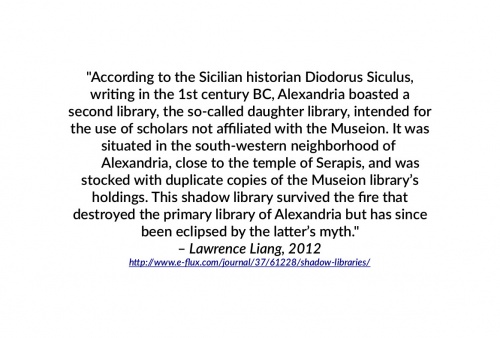](http://www.e-flux.com/journal/37/61228
/shadow-libraries/)
In the essay, he moves between identifying Library.nu as digital Alexandria
and as its shadow.
In this account, even large libraries exist in the shadows cast by their
monumental precedessors.
There’s a lineage, there’s a tradition.
Almost everyone and every institution has a library, small or large.
They’re not necessarily Alexandrias, but they strive to stay relevant.
Take the University of Amsterdam where I now work.
University libraries are large, but they’re hardly _large enough_.
The publishing market is so huge that you simply can’t keep up with all the
niche little disciplines.
So either you have to wait days or weeks for a missing book to be ordered
somewhere.
Or you have some EBSCO ebooks.
And most of the time if you’re searching for a book title in the catalogue,
all you get are its reviews in various journals the library subscribes to.
So my colleagues keep asking me.
Dušan, where do I find this or that book?
You need to scan through dozens of texts, check one page in that book, table
of contents of another book, read what that paper is about.
[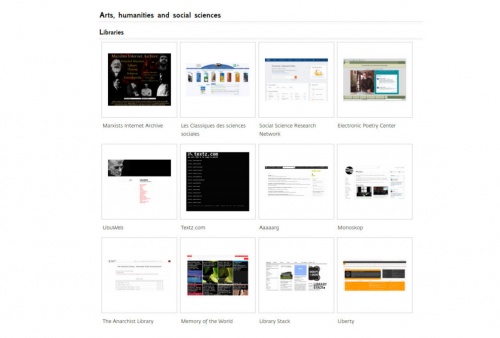](/Digital_libraries#Libraries
"Digital libraries#Libraries")
Or scrapes it from somewhere, since most books today are born digital and live
their digital lives.
...
Digital libraries need to be creative.
They don’t just preserve and circulate books.
[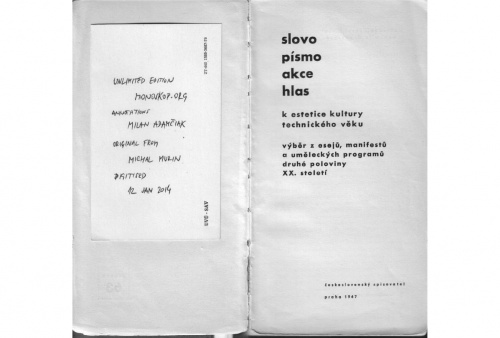](https://monoskop.org/log/?p=10262)
They engage in extending print runs, making new editions, readily
reproducible, unlimited editions.
[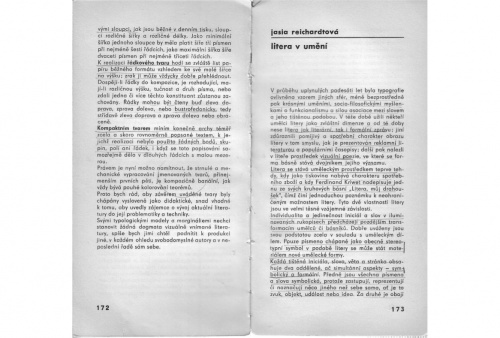](https://monoskop.org/images/d/de/Hirsal_Josef_Groegerova_Bohumila_eds_Slovo_pismo_akce_hlas.pdf#page=87)
This one comes with something extra. Isn’t this beautiful? You can read along
someone else.
In this case we know these annotations come from the Slovak avant-garde visual
poet and composer [Milan Adamciak](/Milan_Adamciak "Milan Adamciak").
[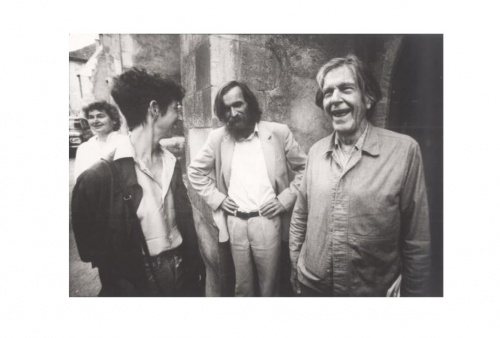](/Milan_Adamciak
"Milan Adamciak")
...standing in the middle.
A couple of pages later...
[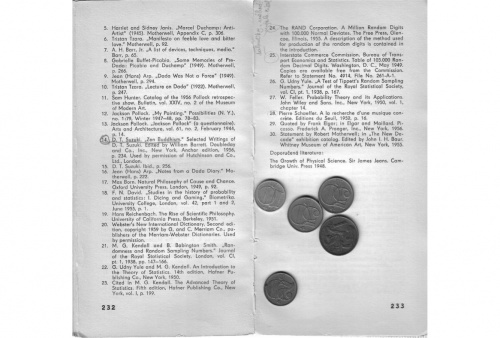](https://monoskop.org/images/d/de/Hirsal_Josef_Groegerova_Bohumila_eds_Slovo_pismo_akce_hlas.pdf#page=117)
...you can clearly see how he found out about a book containing one million
random digits [see note 24 on the image]. The strangest book.
[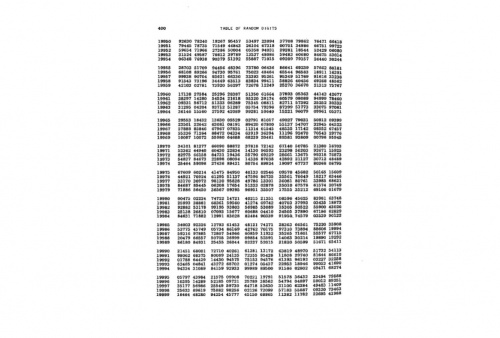](https://monoskop.org/log/?p=5780)
He was still alive when we put it up on Monoskop, and could experience it.
...
Digital libraries may seem like virtual, grey places, nonplaces.
But these little chance encounters happen all the time there.
There are touches. There are traces. There are many hands involved, visible
hands.
They join writers’ hands and help creating new, unlimited editions.
They may be off Google, but for many, especially younger generation these are
the places to go to learn, to share.
Rather than in a shadow, they are out in the open, in plain sight.
[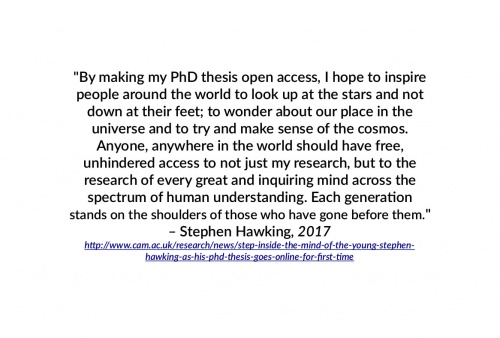](http://www.cam.ac.uk/research/news
/step-inside-the-mind-of-the-young-stephen-hawking-as-his-phd-thesis-goes-
online-for-first-time)
This made rounds last year.
As scholars, as authors, we have reasons to have our works freely accessible
by everyone.
We do it for feedback, for invites to lecture, for citations.
Sounds great.
So when after long two, three, four, five years I have my manuscript ready,
where will I go?
Will I go to an established publisher or an open access press?
Will I send it to MIT Press or Open Humanities Press?
Traditional publishers have better distribution, and they often have a strong
brand.
It’s often about career moves and bios, plans A’s and plan B’s.
There are no easy answers, but one can always be a little inventive.
In the end, one should not feel guilty for publishing with MIT Press.
But at the same time, one should neither feel guilty for scanning and sharing
such a book with others.
...
You know, there’s fighting, there are court cases.
[Aaaaarg](/Aaaaarg "Aaaaarg"), a digital library run by our dear friend [Sean
Dockray](/Sean_Dockray "Sean Dockray"), is facing a Canadian publisher.
Open Library is now facing the Authors Guild for lending scanned books
deaccessioned from libraries.
They need our help, our support.
But collisions of interests can be productive.
This is what our beloved _Cabinet_ magazine did when they found their PDFs
online.
They converted all their articles into HTML and put them online.
The most beautiful takedown request we have ever received.
[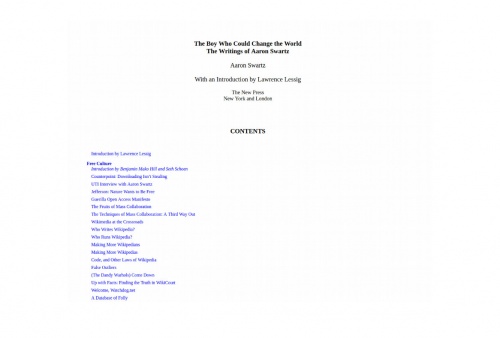](https://monoskop.org/log/?p=16598)
So what is at stake? What are these digital books?
They are poor versions of print books.
They come with no binding, no paper, no weight.
They come as PDFs, EPUBs, JPEGs in online readers, they come as HTML.
By the way, HTML is great, you can search it, copy, save it, it’s lightweight,
it’s supported by all browsers, footnotes too, you can adapt its layout
easily.
That’s completely fine for a researcher.
As a researcher, you just need source code:
you need plain text, page numbers, images, working footnotes, relevant data
and code.
_Data and code_ as well:
this is where online companions to print books come in,
you want to publish your research material,
your interviews, spreadsheets, software you made.
...
Here we distinguish between researchers and readers.
As _readers_ we will always build our beautiful libraries at home, and
elsewhere,
filled with books and... and external harddrives.
...
There may be _no contradiction_ between the existence of a print book in
stores and the existence of its free digital version.
So what we’ve been asking for is access, basic access. The access to culture
and knowledge for research, educational, noncommercial purposes. A low budget,
poor bandwidth access. Access to badly OCR’d ebooks with grainy images. Access
to culture and knowledge _light_.
Thank you.
Dusan Barok
_Written on 16-17 March 2018 in Athens and Amsterdam. Published online on 21
March 2018._
»Public Library. Rethinking the Infrastructures of
Knowledge Production«
Exhibition at Württembergischer Kunstverein Stuttgart, 2014
**The present-day social model of authorship is co-substantive with the
normative regime of copyright. Copyright’s avowed role is to triangulate a
balance between the rights of authors, cultural industries, and the public.
Its legal foundation is in the natural right of the author over the products
of intellectual labor. The recurrent claims of the death of the author,
disputing the primacy of the author over the work, have failed to do much to
displace the dominant understanding of the artwork as an extension of the
personality of the author.**
The structuralist criticism positing an impersonal structuring structure
within which the work operates; the hypertexual criticism dissolving
boundaries of work in the arborescent web of referentiality; or the remix
culture’s hypostatisation of the collective and re-appropriative nature of all
creativity – while changing the meaning we ascribe to the works of culture –
have all failed to leave an impact on how the production of works is
normativized and regulated.
And yet the nexus author–work–copyright has transformed in fundamental ways,
however in ways opposite to what these openings in our social epistemology
have suggested. The figure of the creator, with the attendant apotheosis of
individual creativity and originality, is nowadays more forcefully than ever
before being mobilized and animated by the efforts to expand the exclusive
realm of exploitation of the work under copyright. The forcefulness though
speaks of a deep-seated neurosis, intimating that the purported balance might
not be what it is claimed to be by the copyright advocates. Much is revealed
as we descend into the hidden abode of production.
## _Of Copyright and Authorship_
Copyright has principally an economic function: to unambiguously establish
individualized property in the products of intellectual labor. Once the legal
title is unambiguously assigned, there is a property holder with whose consent
the contracting, commodification, and marketing of the work can proceed. In
that aspect, copyright is not very different from the requirement of formal
freedom that is granted to the laborer to contract out their own labor power
as a commodity to capital, allowing then the capital to maximize the
productivity and appropriate the products of the worker’s labor – which is in
terms of Marx »dead labor.« In fact, the analogy between the contracting of
labor force and the contracting of intellectual work does not stop there. They
also share a common history.
The liberalism of rights and the commodification of labor have emerged from
the context of waning absolutism and incipient capitalism in Europe of the
seventeenth and the eighteenth century. Before the publishers and authors
could have their monopoly over the exploitation of their publications
instituted in the form of copyright, they had to obtain a privilege to print a
book from royal censors. First printing privileges granted to publishers, for
instance in early seventeenth century Great Britain, came with the burden
placed on publishers to facilitate censorship and control over the
dissemination of the growing body of printed matter in the aftermath of the
invention of movable type printing.
The evolution of regulatory mechanisms of contemporary copyright from the
context of absolutism and early capitalism receives its full relief if one
considers how peer review emerged as a self-censoring mechanism within the
Royal Academy and the Académie des sciences. [1] The internal peer review
process helped the academies maintain the privilege to print the works of
their members, which was given to them only under the condition that the works
they publish limit themselves to matters of science and make no political
statements that could otherwise sour the benevolence of the monarch. Once they
expanded to print in their almanacs, journals, and books the works of authors
outside of the academy ranks, they both expanded their scientific authority
and their regulating function to the entire nascent field of modern science.
The transition from the privilege tied to the publisher to the privilege tied
to the natural person of the author would unfold only later. In Great Britain
this occurred as the guild of printers, Stationers’ Company, failed to secure
the extension of its printing privilege and thus, in order to continue with
the business of printing books, decided to advocate a copyright for the
authors instead, which resulted in the passing of the Copyright Act of 1709,
also known as the Statute of Anne. Thus the author became the central figure
in the regulation of literary and scientific production. Not only did the
author now receive the exclusive rights to the work, the author was also made
– as Foucault has famously analyzed – the identifiable subject of scrutiny,
censorship, and political sanction by the absolutist state or the church.
And yet, although the romantic author now took center stage, copyright
regulation, the economic compensation for the work, would long remain no more
than an honorary one. Until well into the eighteenth century literary writing
and creativity in general were regarded as resulting from the divine
inspiration and not from the individual genius of the author. Money earned in
the growing business with books mostly stayed in the hands of the publishers,
while the author received an honorarium, a flat sum that served as a »token of
esteem.« [2] It was only with the increasingly vocal demand by the authors to
secure material and political independence from the patronage and authority
that they started to make claims for rightful remuneration.
## _Of Compensation and Exploitation
_
The moment of full-blown affirmation of romantic author-function marks a
historic moment of redistribution and establishment of compromise between the
right of publishers to economic exploitation of the works and the right of
authors to rightful compensation for their works. Economically this was made
possible by the expanding market for printed books in the eighteenth and the
nineteenth century, while politically this was catalyzed by the growing desire
for autonomy of scientific and literary production from the system of feudal
patronage and censorship in gradually liberalizing modern capitalist
societies. The autonomy of production was substantially coupled to the
production for the market. However, the irenic balance could not last
unobstructed. Once the production of culture and science was subsumed under
the exigencies of the market, it had to follow the laws of commodification and
competition that no commodity production can escape.
With the development of big corporation and monopoly capitalism, [3] the
purported balance between the author and the publisher, the innovator or
scientist and the company, the labor and the capital, the public circulation
and the pressures of monetization has become unhinged. While the legislative
expansions of protections, court decisions, and multilateral treaties are
legitimated on basis of the rights of creators, they have become the economic
basis for the monopolies dominating the commanding heights of the global
economy to protect their dominant position in the world market. The levels of
concentration in the industries with large portfolios of various forms of
intellectual property rights is staggering. The film industry is a US$88
billion industry dominated by six major studios. The recorded music industry
is an almost US$20 billion industry dominated by three major labels. The
publishing industry is a US$120 billion industry, where the leading ten earn
in revenues more than the next 40 largest publishing groups. Among patent
holding industries, the situation is a little more diversified, but big patent
portfolios in general dictate the dynamics of market power.
Academic publishing in particular draws a stark relief of the state of play.
It is a US$10 billion industry dominated by five publishers, financed up to
75% from the subscriptions of libraries. It is notorious for achieving extreme
year on year profit margins – in the case of Reed Elsevier regularly well over
20%, with Taylor & Francis, Springer, and Wiley-Blackwell only just lagging
behind. [4] Given that the work of contributing authors is not paid, but
financed by their institutions (provided they are employed at an institution)
and that the publications nowadays come mostly in the form of electronic
articles licensed under subscription for temporary use to libraries and no
longer sold as printed copies, the public interest could be served at a much
lower cost by leaving commercial closed-access publishers out of the equation.
However, given the entrenched position of these publishers and their control
over the moral economy of reputation in academia, the public disservice that
they do cannot be addressed within the historic ambit of copyright. It
requires politicization.
## _Of Law and Politics_
When we look back on the history of copyright, before there was legality there
was legitimacy. In the context of an almost completely naturalized and
harmonized global regulation of copyright the political question of legitimacy
seems to be no longer on the table. An illegal copy is an object of exchange
that unsettles the existing economies of cultural production. And yet,
copyright nowadays marks a production model that serves the power of
appropriation from the author and market power of the publishers much more
than the labor of cultural producers. Hence the illegal copy is again an
object begging the question as to what do we do at a rare juncture when a
historic opening presents itself to reorganize how a good, such as knowledge
and culture, is produced and distributed in a society. We are at such a
juncture, a juncture where the regime regulating legality and illegality might
be opened to the questioning of its legitimacy or illegitimacy.
1. Jump Up For a more detailed account of this development, as well as for the history of printing privilege in Great Britain, see Mario Biagioli: »From Book Censorship to Academic Peer Review,« in: _Emergences:_ _Journal for the Study of Media & Composite Cultures _12, no. 1 [2002], pp. 11–45.
2. Jump Up The transition of authorship from honorific to professional is traced back in Martha Woodmansee: _The Author, Art, and the Market: Rereading the History of Aesthetics_. New York 1996.
3. Jump Up When referencing monopoly markets, we do not imply purely monopolistic markets, where one company is the only enterprise selling a product, but rather markets where a small number of companies hold most of the market. In monopolistic competition, oligopolies profit from not competing on prices. Rather »all the main players are large enough to survive a price war, and all it would do is shrink the size of the industry revenue pie that the firms are fighting over. Indeed, the price in an oligopolistic industry will tend to gravitate toward what it would be in a pure monopoly, so the contenders are fighting for slices of the largest possible revenue pie.« Robert W. McChesney: _Digital Disconnect: How Capitalism Is Turning the Internet Against Democracy_. New York 2013, pp. 37f. The immediate effect of monopolistic competition in culture is that the consumption is shaped to conform to the needs of the large enterprise, i.e. to accommodate the economies of scale, narrowing the range of styles, expressions, and artists published and promoted in the public.
4. Jump Up Vincent Larivière, Stefanie Haustein, and Philippe Mongeon: »The Oligopoly of Academic Publishers in the Digital Era,« in: _PLoS ONE_ 10, no. 6 [June 2015]: e0127502, doi:10.1371/journal.pone.0127502.
Tomislav Medak is a philosopher with interests in contemporary political
philosophy, media theory and aesthetics. He is coordinating the theory program
and publishing activities of the Multimedia Institute/MAMA (Zagreb/Croatia),
and works in parallel with the Zagreb-based theatre collective BADco.